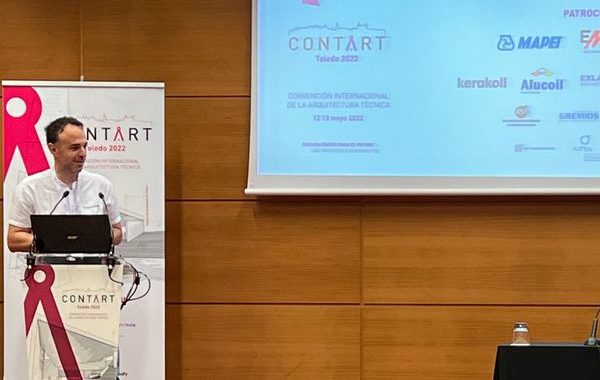Self-sufficient living module at CONTART2022. With Life Zero Energy Mod was presented the commitment to transportable modules that incorporate renewable energy sources.
The exhibition took place at the IX International Convention of Technical Architecture in Toledo.
Our partner, B+HAUS, represented by Roberto Higuero Artigas, made a presentation in the “scientific communications” session. It was focused on the objectives and achievements of the Zero Energy Mod project.
Zero emissions
At the beginning, Higuero highlighted that the ZEROENERGYMOD project achieves zero impact on emissions. Energy storage through hydrogen and photovoltaic and wind energy production makes this possible.
He added that the project is 55% financed by LIFE funds, the rest being contributed by the participating companies. The investment in the research amounts to one million euros.
Later in the scientific communications session, he answered different questions:
-What are we going to achieve?
-Thanks to the Life Zero Energy Mod project, savings in energy consumption of at least 85% will be achieved with respect to current housing modules, guaranteeing maximum indoor air quality.
-How are we going to achieve this?
-We are building a prototype called ZEROENERGYMOD which consists of two parts. The first is the ENERMOD module that generates 2 types of renewable energy (wind and solar) and two types of energy storage (batteries and hydrogen storage) to cover the energy needs of the habitable module. The second is the PASSIVMOD module, which is a living space designed to offer maximum comfort to the user at the lowest energy cost, built under the PassivHaus standard.
-Where and when did the project start?
-The project started in June 2020. The construction of ZEROENERGYMOD began during the first year of work.
In this project we will move to 3 locations where the Spanish Army operates. Locations chosen for the project due to their geographical, operational and climatological characteristics. CENAD SAN GREGORIO – Zaragoza, Aldazi Base Camp – Latvia and Gabriel de Castilla Base in Deception Island – Antarctic Continent.
Technical benefits: Reduction of assembly time to three days. Maximum thermal comfort, energy savings and emissions reduction while maintaining maximum flexibility in its applications.
Also, the project adapts to the specific regulations for the design of buildings under the Passivhaus standard, as well as to the regulatory requirements of NATO and maritime and air transport standards.
Project partners: B+Haus Arquitectura eficiente SL, CUD – Centro Universitario de la Defensa, Fundación para el desarrollo de las nuevas tecnologías del Hidrógeno en Aragón, and the company ARPA equipos móviles de campaña.

